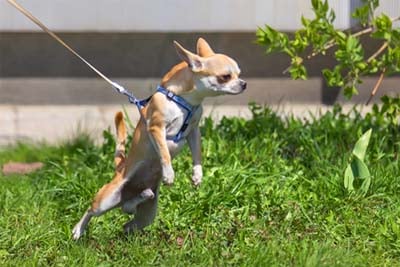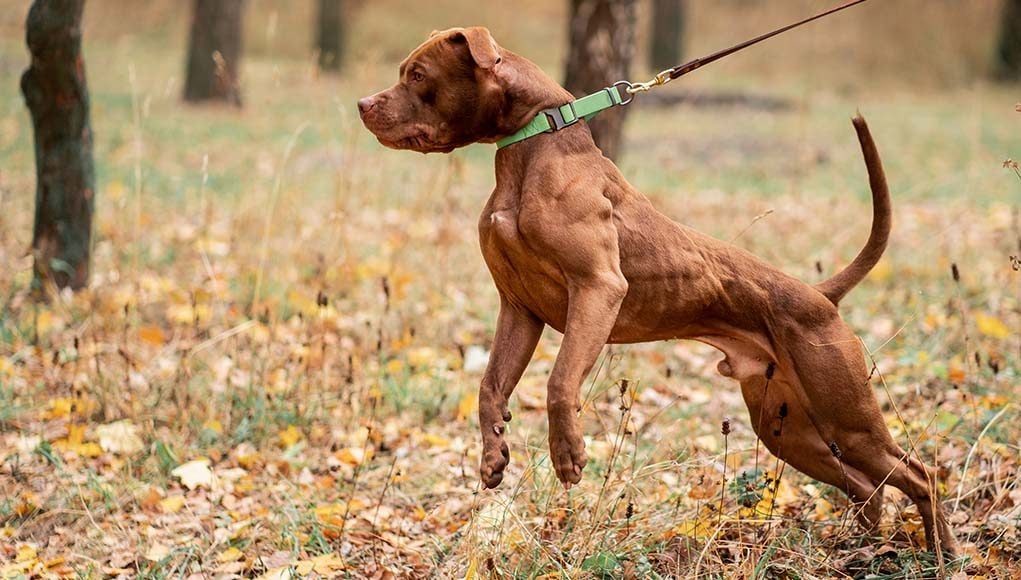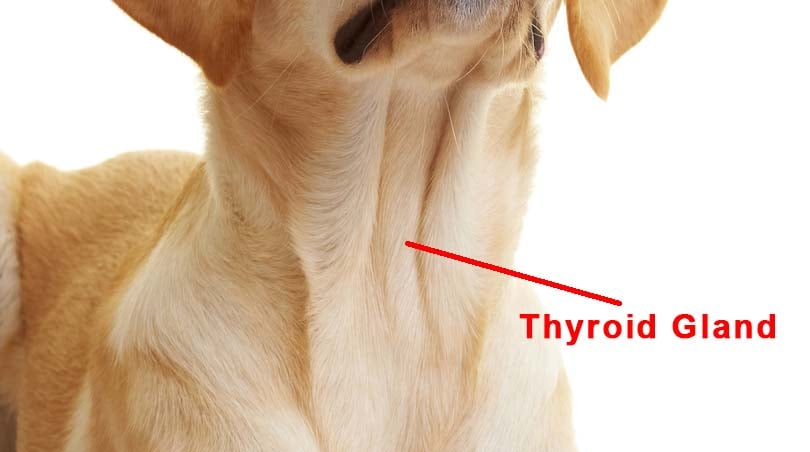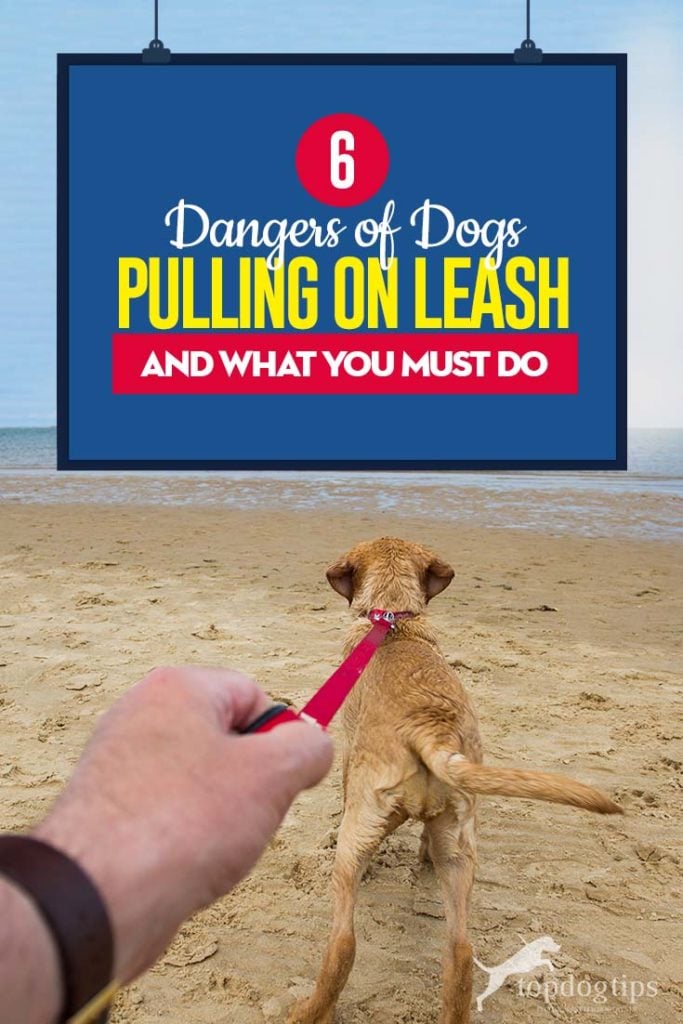Leash pulling is fairly common in excited dogs, with their collar squeezing around the dog’s throat. In fact, a 2008 study reported leash pulling in 70% of dog owners. The problem is that the dog doesn’t stop when they reach the end of a leash, and will even start pulling harder. Some dogs may keep pulling even despite the pain.
The dangers of dogs pulling on a leash vary from physical to psychological, and the results from the injuries can be temporary, long-term or permanent. A 2006 study found how leash/collar pulling causes damage to dog's cornea, trachea and larynx. A more recent 2016 study observed other hazards to both dogs and their owners, so below are some of the most common dangers of dogs pulling on a leash you need to keep in mind.
1. Collar Injuries
The main problem are collar related injuries that come as a consequence of collar cutting into your dog’s neck when they're pulling the leash, or when you pull the dog to stop them. Contrary to popular belief, our dog’s neck is similar to ours in its anatomy, strength and sensitivity.
Just because your dog keeps racing after the cat even after the neck pull doesn’t mean that your pooch hasn't been hurt or is in pain. Dogs react differently to being injured and pain acknowledgement can be delayed until their excitement wears off. That’s why you have to think about your pet's pain for them.
Pulling on a leash can cause bruises around a dog's neck, cuts and laceration and even bone fracture. While some of these might heal quickly, others can be dangerous and cause lifelong trauma to your dog.
2. Choking and Strangulation
One of the greatest dangers of a leash pull is your dog choking or being strangled by their own collar. Leashes and collars can be deadly when they get stuck or wrap around things, and this happens far more often than pet owners imagine. Reports show an average of 26,000 dogs every year (or 71 dogs a day) will be injured in a collar related accident.
Our pets don’t know when it's time to stop pulling, and if they get lost and panicky, their reaction is to try and get themselves free no matter the cost. Pressure from the collar can stop the air completely or cause a dog's neck to break. By the time we find our dog, it may be too late to save their life.
3. Hypothyroidism (Decrease in Thyroid Gland Hormone)
The thyroid gland is located in the dog's neck, around their trachea, exactly in the part where we put the collar:
Pulling on a leash causes trauma to a dog's thyroid gland and such repetitive traumas lead to inflammation and potential destruction of the gland, which in turn can lead to the decrease of thyroid gland hormone in your pet.
When the body tries to get rid of the inflamed cells, your dog’s immune system has to destroy part of the gland itself. Low levels of thyroid hormone can cause hypothyroidism: weight gain, loss of fur, skin issues and potential organ failures.
4. Ear and Eye Problems
Pulling the leash exercises pressure on a dog’s neck, and this pressure quickly travels to your dog’s head, eyes and ears. As collars put all of the pressure on a very small area, they can prevent blood from circulating in a proper way to and from the dog’s head, neck and the rest of the body.
If the dog has some precondition such as eye or ear injury or glaucoma, the effects of pulling can be particularly dangerous for your dog’s organs and senses. The above quoted studies found this to be the most common danger of leash pulling in dogs.
5. Vagus Nerve Issues
Vagus nerve is a part of every dog’s nervous system and it starts in their neck area. This nerve assists in regulating the tension in a dog's blood vessels, and the proper functioning of the dog’s heart, lungs and stomach, thus it's crucial for this nerve to remain intact.
When the vagus nerve is affected through leash pulling, it may cause fainting in dogs. And constant jerking of the leash and putting pressure through the dog collar can also be responsible for damaging this nerve altogether, and shortening your pet’s life span.
6. Damage to the Nervous System
A dog’s neck has a lot of nerves inside of it. Consistently pulling on the leash can do harm to them, resulting in damage of peripheral nerves and neuromuscular junction. As a consequence, your dog will get a weird sensation in almost any part of the body. Most commonly it's their legs that will be affected.
The sign of nerve damage in dogs is hypersensitivity or tingling sense in their paws. You will know this is the case if your pet starts sniffing and licking their paws in confusion.
How to Prevent This from Happening
Leash pulling in dogs can be hard to prevent, especially with very excited and energetic breeds or puppies. Fortunately, there are a few things you can do to minimize the dangers of pulling on a leash, including using the right tools and training techniques.

Warm-Up
If your dog is a heavy puller, this part is essential before every walk.
Massaging your dog’s neck and body can relax the muscles and prepare their body for exercise. As any sudden movement is more difficult on our body if we start exercising without warming up properly, so it is on our dogs.
Take a couple of minutes before bringing your dog out for walk, and do the warming-up massage, paying close attention to their neck. Your dog will likely enjoy the message, and it will give you some bonding time.
Train Your Dog
Proper dog training is key to preventing leash pulling dangers. If you teach your pet how to behave when you two are walking together, when to stop and when to move, it will be much easier to avoid a bad scenario.
If you're having trouble with training, it's recommended to use a clicker, clear commands and plenty of dog treats when teaching your pup not to pull on a leash. Avoid punishing the dog for their bad behavior, but avoid supporting it too – use reinforcement instead.
For example, if you’ve told your dog to stop yet they keep going and pulling you after, refuse to go in the direction that the dog wants to go. Once your pup learns that the stubbornness is no way to go, your walks will become a more pleasant activity.

Use a No-pull Harness
Replace the collar and leash combo with a no-pull harness.
This is the best ways to avoid a whole range of dangers arising from a leash and collar pulling. Studies showed how harness are significantly less dangerous than collars. The main advantage of the harness is that it doesn’t exercise pressure in one small concentrated area like a collar does; the pressure spreads all over a dog’s body.
There are different types of harnesses – pick the one that doesn't go around your dog’s neck, because if it does, it poses the same danger as a collar. The leash should be attached to the front of the harness instead of the back since it increases the control you have over your dog. That’s because every pull makes the dog turn towards you a bit, which is the clear signal that they need to stop running.
Go Leash-Free
In most cases, your dog should never be without a leash in public places.
However, sometimes you know it's not an issue – use that opportunity and when possible, let your dog off the leash. Your pet feels best when they can run freely without the need to constantly pull on the leash. This goes hand in hand with proper off-leash training because you cannot just let a dog who is untrained to run around.
Once your dog learns basic commands, make it a habit to go someplace in nature more often where both of you can relax and be free of any restrictions.
Summary
There are many dangers of dogs pulling on a leash since their necks are as sensitive as ours. Constant jerking and pulling on a leash can cause severe injuries and lead to choking, strangulation, hypothyroidism, issues with the nervous system and problems with eyes and ears, and even death.
To prevent these problems, massage your dog’s neck as a warm-up before the exercise or daily walks. Instead of using a collar/leash combo, choose a no-pull dog harness because it makes pressure to be evenly distributed over the dog's whole body.
Additionally, train your dog to stop on your command and take your pooch to places where you won’t need to use the leash at all, and enjoy some freedom.
READ NEXT: How To Train A Dog To Poop On A Leash
Disclosure: We may earn affiliate commissions at no cost to you from the links on this page. This did not affect our assessment of products. Read more here and find full disclosure here.















